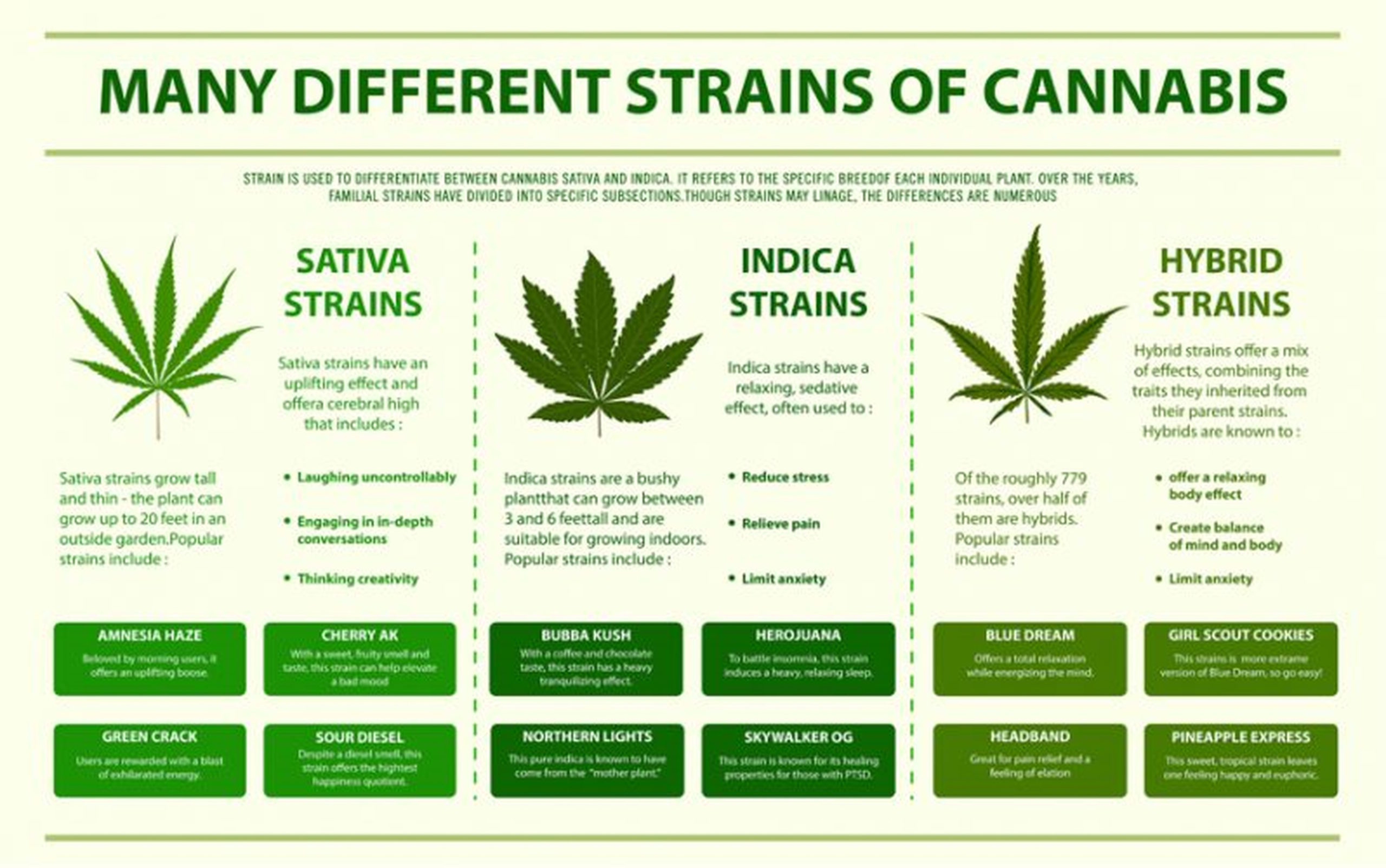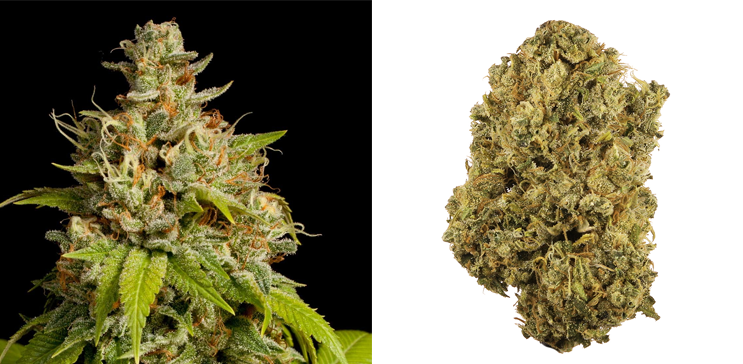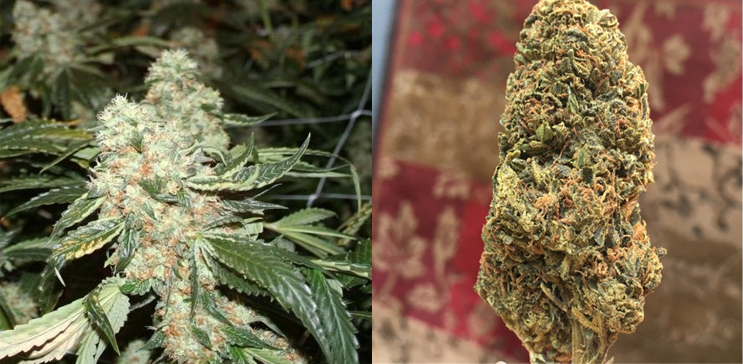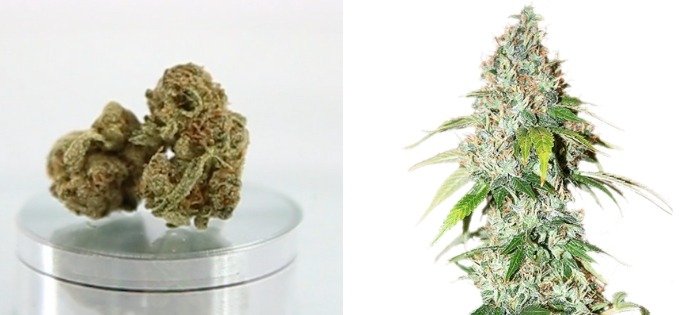
The use of cannabis has become increasingly more popular in recent years, with many people discovering the potential healing properties of marijuana. With this newfound attention comes a lot of questions about the different types of cannabis and their effects. What’s the difference between sativa, indica, and hybrid? What are cannabinoids and terpenes? Are there potential side effects and risks? To answer all these questions and more, let’s explore the fascinating world of indica sativa and hybrid marijuana strains.
Sativa vs. Indica vs. Hybrid
Sativa and Indica are the two main types of cannabis plants, each with their own unique characteristics. Sativa strains tend to be tall and lanky with thin leaves, while Indicas are typically short and stocky with wide leaves. Both have a different chemical makeup, which leads to different psychoactive effects when consumed. Sativas provide an uplifting and energizing high that is great for daytime activities such as outdoor activities or creative projects. On the other hand, Indicas are more suitable for nighttime use, as they produce a more relaxing and sedating effect that can help promote sleep.
Hybrid strains are a combination of both Sativa and Indica plants that result in a strain that has properties of both parents. Hybrids can vary greatly depending on the ratio of Sativa to Indica used in the breeding process, allowing growers to tailor their experience accordingly. Hybrid strains also tend to have higher terpene profiles than either parent plant, resulting in more diverse flavors and aromas from individual strains.
Whether it’s for medical conditions or recreational purposes, understanding the differences between sativa vs indica vs hybrid weed strains is essential for finding the perfect strain for you. Each type has its own unique qualities that can offer different effects depending on what you’re looking for in your cannabis experience.
Cannabinoids
Cannabinoids are chemical compounds found in cannabis plants that have a wide range of physiological effects on the human body. Tetrahydrocannabinol (THC) and cannabidiol (CBD) are two of the most well-known cannabinoids, but there are dozens more. THC is responsible for producing the “high” associated with recreational marijuana use, while CBD is known for its calming effects. Cannabinoids interact with receptors in the body to produce both positive and negative effects. For medical conditions such as chronic pain, inflammation, anxiety, and depression, cannabinoids can provide relief without the psychoactive effects of THC. For recreational users, many strains contain higher levels of THC to create a euphoric experience. Understanding the different types of cannabinoids and their potential effects can help consumers make better-informed decisions about which strains may be right for them.

Terpenes
Terpenes are an important component of cannabis strains and can play a major role in the effects of a particular strain. Terpenes are aromatic compounds found in many plants, including cannabis, and are responsible for the smell and flavor of each strain. They also interact with cannabinoids to produce different effects on the user. For instance, some terpenes may enhance the euphoric effects of THC while others may reduce anxiety or increase focus. Understanding terpene profiles is key to finding the perfect strain for any given situation. In addition to their impact on the user’s experience, some terpenes may offer medicinal benefits such as pain relief or anti-inflammatory properties. Regardless of what type of marijuana you’re using, familiarizing yourself with terpene profiles can help you find the right strain for your needs.
Sativa
Sativa is one of the three main types of cannabis, alongside indica and hybrid. Sativa plants are tall, thin and have finger-like leaves. They originate in hot, dry climates such as Africa, Central America, Southeast Asia and portions of Western Asia. Sativa typically has lower doses of CBD and higher doses of THC compared to other types of cannabis. Terpenes are an important component of sativa strains and can play a major role in the effects experienced by the user. These aromatic compounds are responsible for the smell and flavor of each strain and interact with cannabinoids to produce varied effects on the user. For instance, some terpenes may enhance euphoric effects while others reduce anxiety or increase focus. Understanding terpene profiles is key to finding the right strain for any given situation and can help you find the perfect strain for your needs.

THC Content 15-25%
CBD Content <1%
Aroma and Flavour Spicy, Herbal, Licorice, Pine, Citrus
Difficulty None; grows indoors and outdoors
Climate Indoors, Steppe, Mediterranean
Plant size Up to 220cm
Flowers 56-63 days
Yields 350g/m2, 450g/plant
Effects Creativity, Focus, Intense head-high
Indica
Indica is one of the three main types of cannabis, alongside sativa and hybrid. Indica plants are typically short and bushy with wide, chunky leaves. They are native to Afghanistan, India, Pakistan and Turkey, where they have adapted to the often harsh climate. Indica strains tend to have higher levels of CBD than other types of cannabis and lower levels of THC. While terpenes are also found in indica strains, they play a less significant role in producing effects on the user due to the higher CBD content. Though indica may produce milder effects than its sativa counterpart, it can still provide relaxation and relief from pain or stress. Furthermore, some Indica strains may be used as sleep aids or to alleviate symptoms of anxiety or depression. With its unique properties and effects, Indica is an increasingly popular strain for both medical and recreational purposes.

Dark Star
THC Content 16-19%
CBD Content 1.08%
Aroma/Flavors Earthy, Blackberry, Grapes
Grow Difficulty Needs a lot of sunlight
Climate Greenhouse, Indoors
Flowers 70 days
Yields ~500g/m2
Genetics Purple Kush x Mazar I-Sharif
Effects Full-body relaxation, Sleepy, Hungry, Euphoria
Hybrid
Hybrid cannabis is a cross between indica and sativa strains, combining the best characteristics of both species. With unique terpene profiles and cannabinoid ratios, hybrid strains offer an array of effects to users. Popular hybrid weed strains include Blue Dream, Girl Scout Cookies and Pineapple Express. These plants are often grown in greenhouses or on farms as they require specialized care due to their genetic makeup. Hybrid cannabis may produce both relaxing and stimulating effects depending on the specific strain, making them a great choice for those looking for relief from medical conditions such as pain or anxiety. While there may be some negative effects associated with certain hybrids, such as increased heart rate or dry mouth, these can typically be mitigated through careful dosing. Overall, hybrid cannabis provides users with the opportunity to experience the best of both worlds in terms of euphoric cerebral effects and physical relaxation.

OG Kush
THC 15-20%
Sativa/Indica 25/75
Flowering Time 56 to 63 days
Grow Difficulty Medium
Max Indoor Yield 600 grams/m²
Max Outdoor Yield 1000 grams/plant
Plant Height (Outdoors) 90 to 110 cm
Plant Height (Indoors) 80 to 100 cm
Effects Calming, Euphoric, Happy, Hungry, Relaxed, Sleepy, Uplifting
Aroma/Flavors Piney, Herbal, Citrus, and Spicy Flavor
Potential Side Effects and Risks
While hybrid cannabis may provide therapeutic benefits, potential side effects and risks should be considered. As with any cannabis use, the most common side effects are dry mouth and red eyes. Additionally, users may experience increased heart rate or dizziness due to increased levels of THC in some hybrids. Other risks can include anxiety or paranoia due to the psychoactive effects of cannabis. While these side effects are typically mild and pass quickly, it is important for those considering using hybrid cannabis to research potential health risks before using it. Furthermore, individuals should always consult with a doctor prior to using any type of medical marijuana product as it may interact with other medications or treatments they are currently taking. By understanding the potential side effects and risks associated with hybrid cannabis use, users can make an informed decision about whether this plant is right for them.
Strains For Certain Conditions
For those seeking relief from certain medical conditions, hybrid cannabis may offer a promising option. Popular strains for medical use include Acapulco Gold, which has a terpene profile that can provide relaxing effects. This strain is also known to possess both cerebral and relaxing effects due to its high CBD content. For individuals with chronic pain or inflammation, White Widow is known to be effective in providing relief due to its elevated levels of THC and CBD. Other hybrid strains that have been found beneficial in treating certain conditions include Headband, Girl Scout Cookies, and Granddaddy Purple. It is important to note that individual strain effects may vary and users should speak with their doctor before using any cannabis product for medical purposes. With the right strain selection and responsible use, hybrid cannabis can provide potential therapeutic benefits for certain conditions.
Originally posted 2023-04-08 13:39:31.


 James Alexander
James Alexander